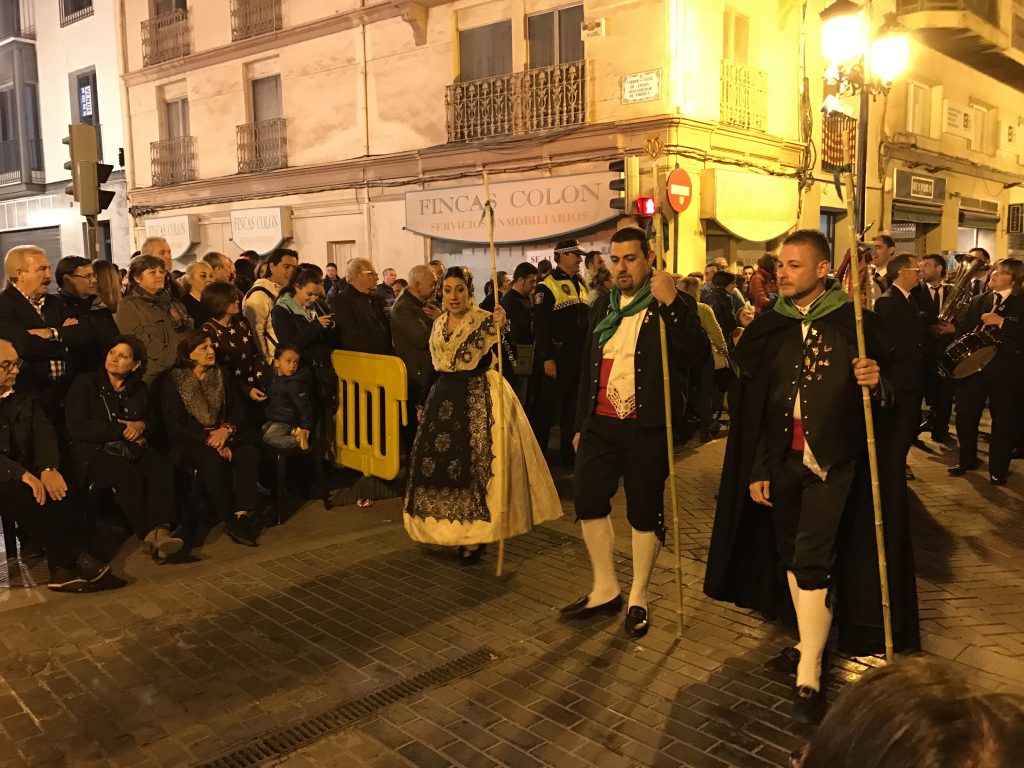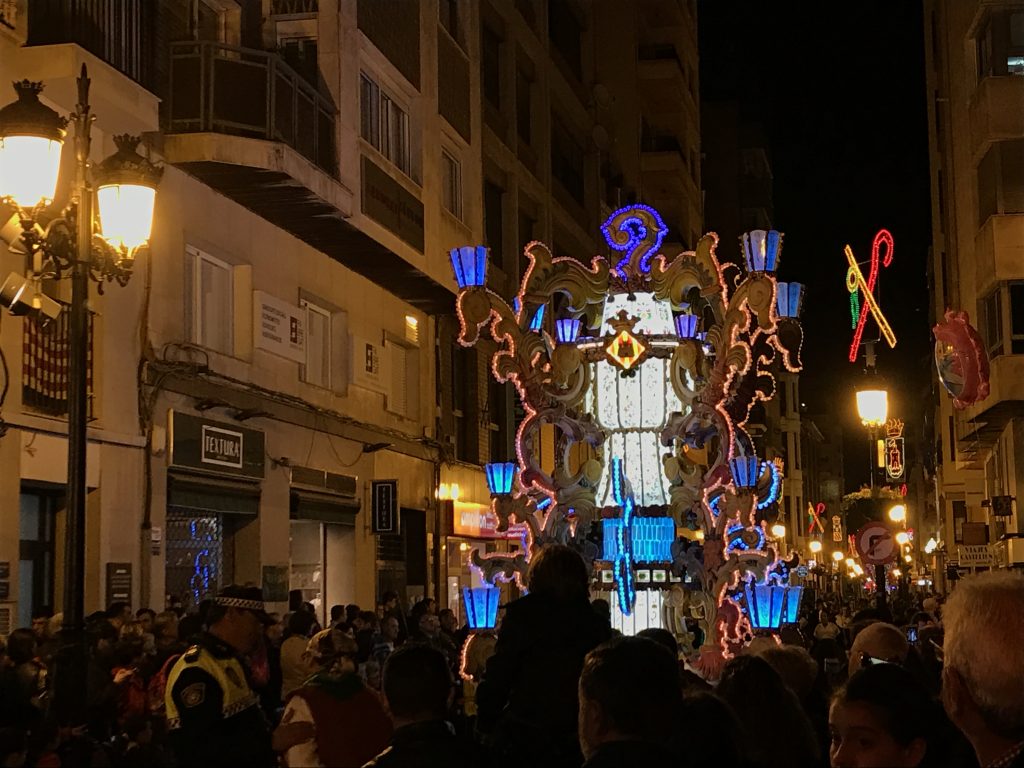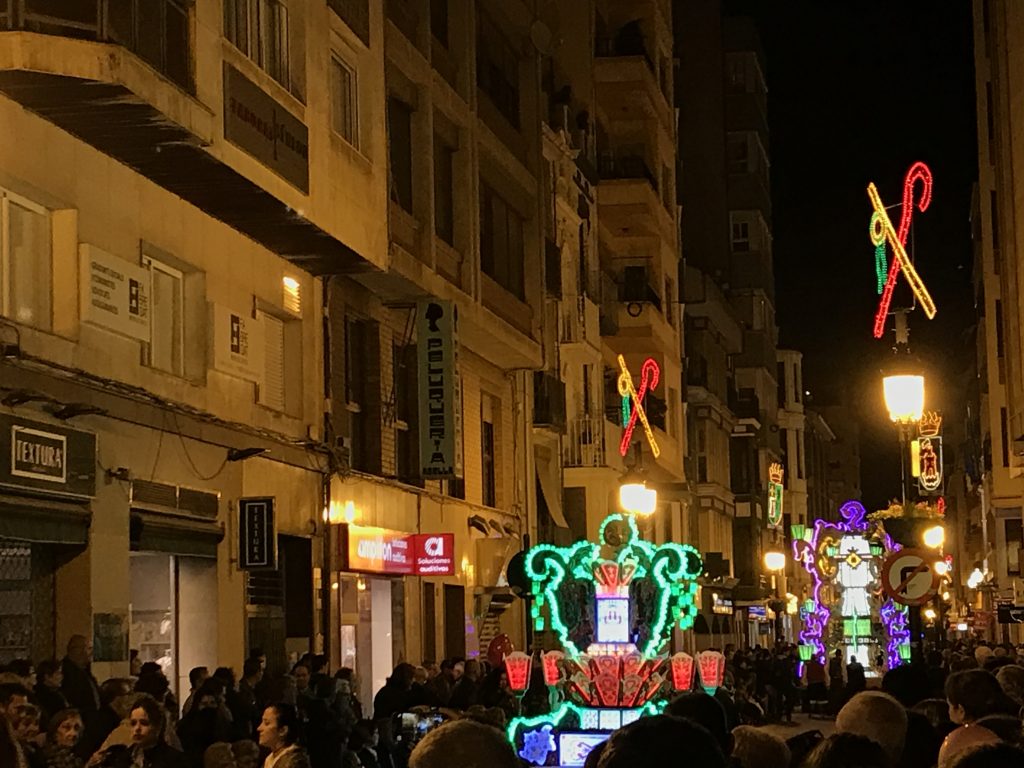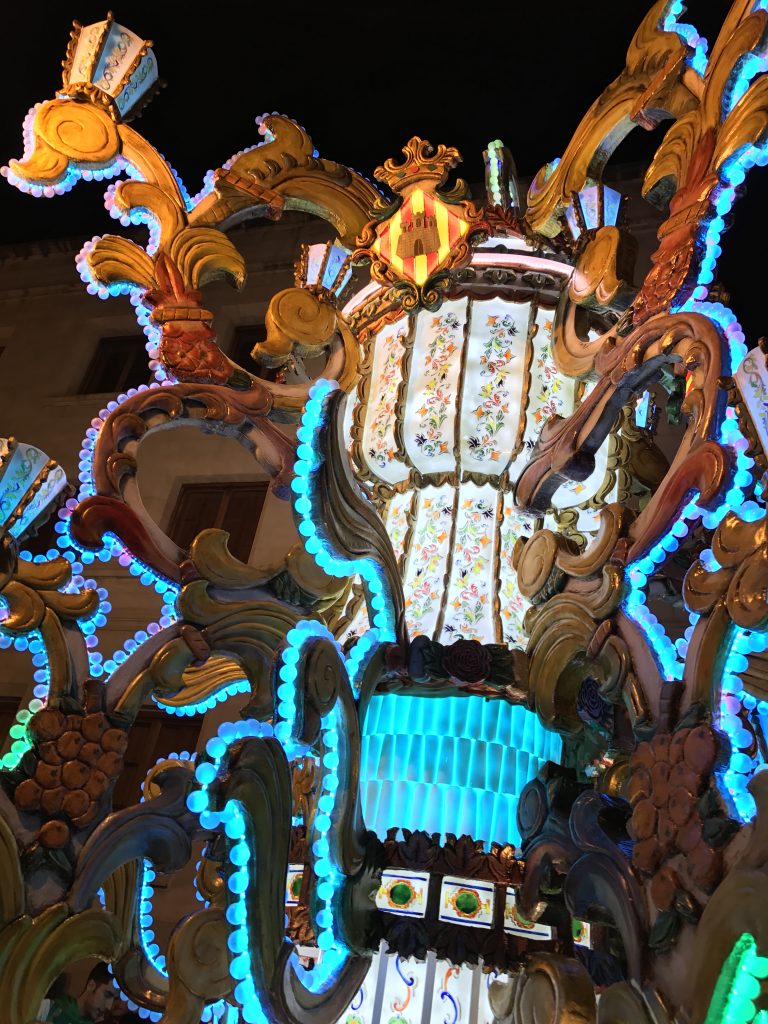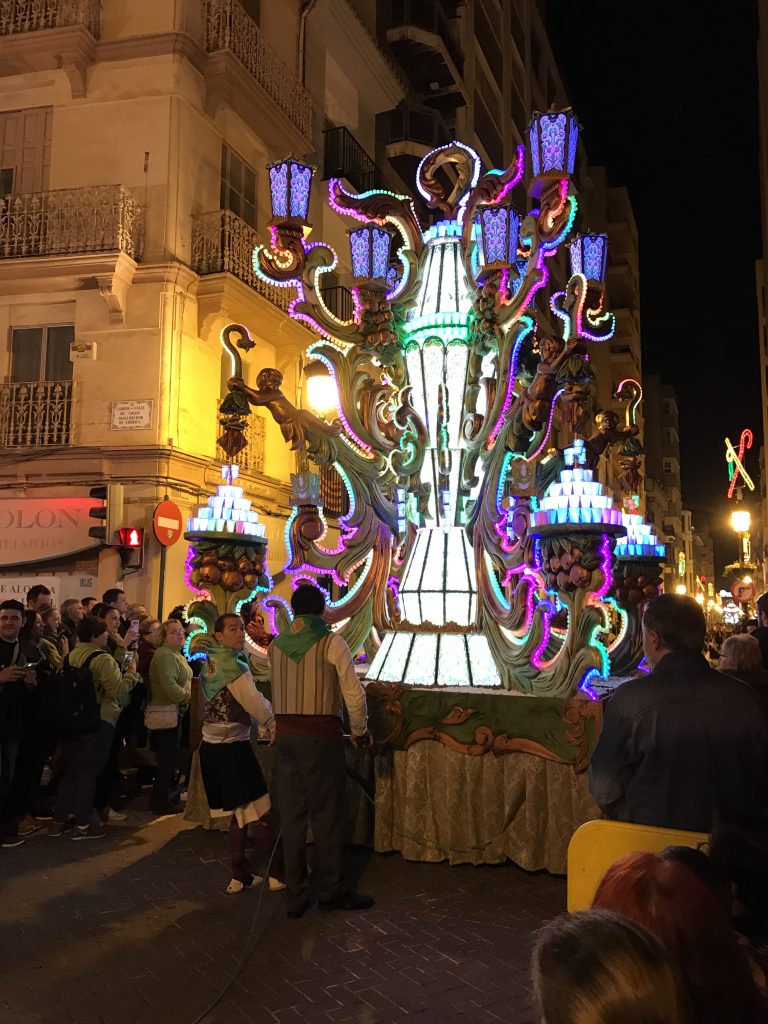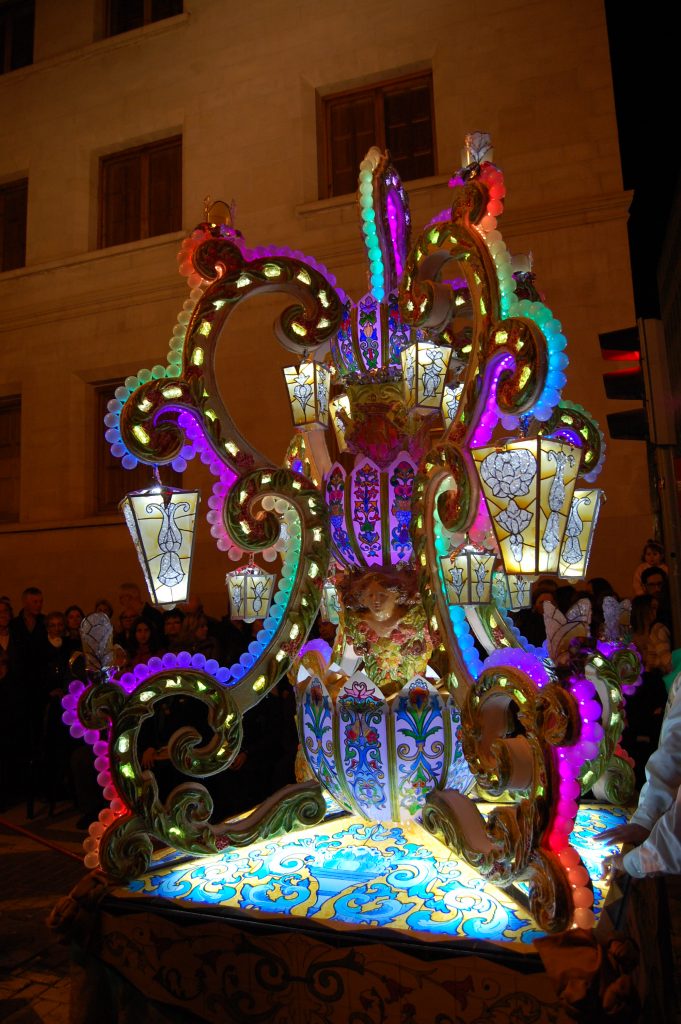
We experienced an overabundance of festivals in March when two regional celebrations converged in one nearly sleepless weekend (from which – at the end of May – we have yet to recover). Magdalena, the main festival in nearby Castellón de la Plana, known for its pilgrimage and its large monuments of light, began the last weekend of las Fallas.
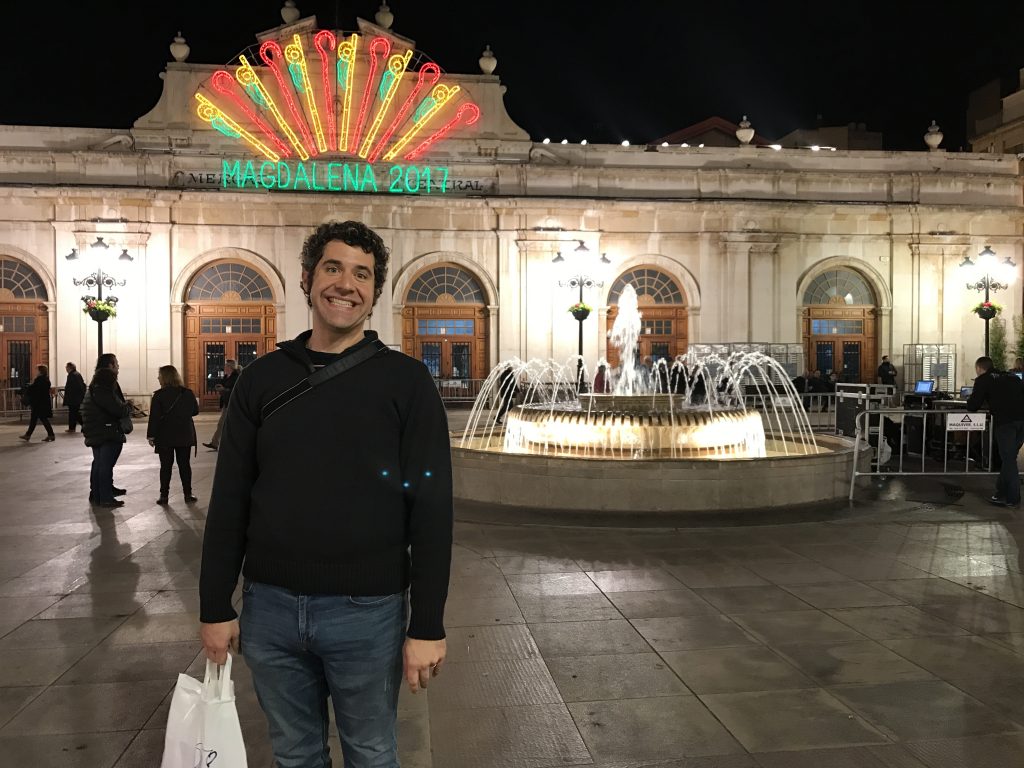
Despite its proximity to us, we didn’t see much of la Magdalena – only stopping by for a couple of hours to watch a procession before heading home to see the bonfires marking the end of Fallas. Honestly, after a week full of Fallas parades, fireworks, and not enough sleep, we were too tired to return to Castellón to see more.
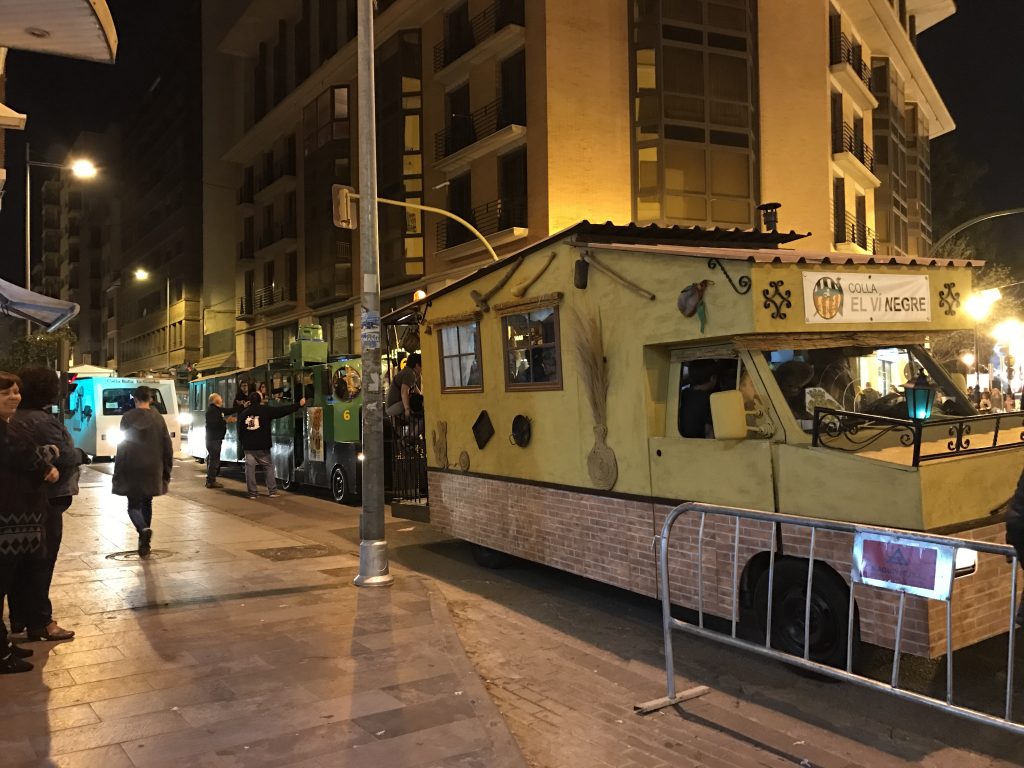
Magdalena is affiliated with religion – it always begins the first Sunday of Lent – but it also commemorates the city’s move from a hill to the coastal plain in the year 1251. Thus, a pilgrimage to a hillside chapel is an important part of the celebration. We didn’t find out as much about it as we have learned about the Fallas, but what we did see was interesting.
For starters, when we arrived we noticed groups called collas driving some interesting vehicles into a large square. We also saw pilgrims back from their march, traditional pretzel-bagels and shepherd crooks in hand. It seems the pretzel-bagels are both a midmorning snack during the journey to the hillside chapel, and a reward for having reached the top.
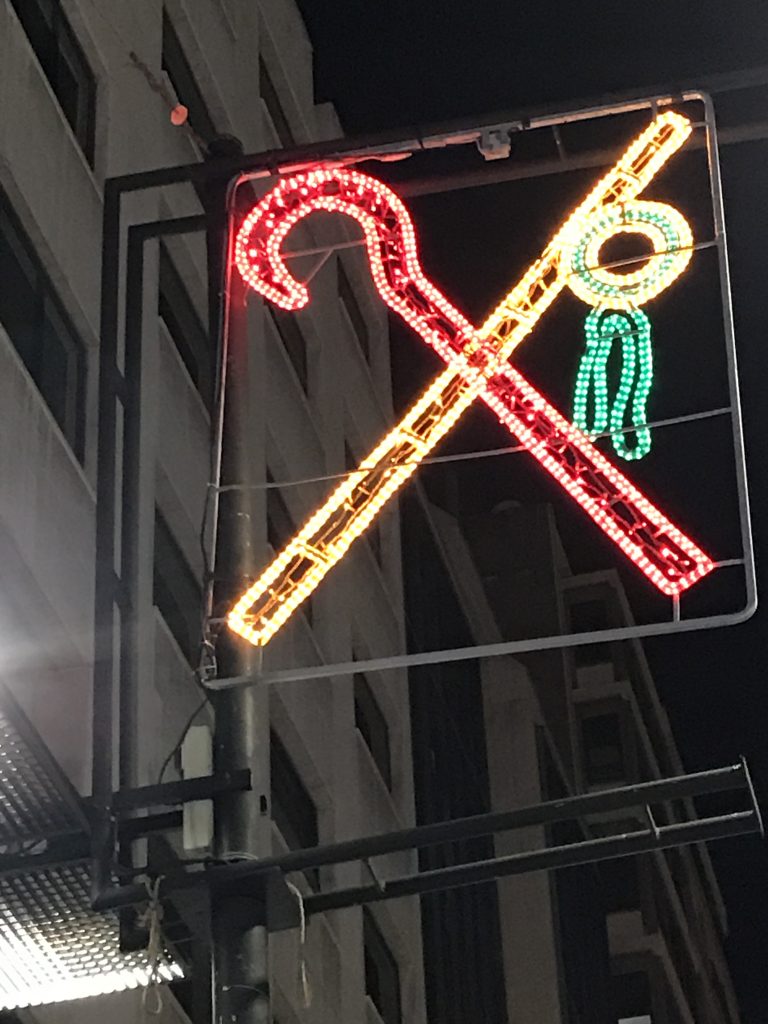
Much like the Fallas, there were many people walking about in traditional dress.
But while the Fallas features papier–mâché monuments that burn at the end of the week, Magdalena shows off gaiatas, elaborate carriages of light – these, one assumes, are not burned.
The gaiatas represent oil lanterns that the people of Castellón hung from the crooks of their walking sticks when they made their way down from the hill to the plain in the year 1251.
As with any Valencian parade, there’s a lot of starting and stopping. Participants in the Magdalena procession have a signature move for those slower moments: the twirl. Spectators also have developed a signature way to pass the time, as you see from the edge of the video, there.
Remember earlier when we mentioned this festival also has religious significance?
Don’t fret – it’s got nothing to do with racism. According to some quick Internet research, the people who wear the pointy hats are Nazarenos, named after the people of Nazareth. You see them a lot around Easter time, covering their faces with the hoods as a sign of mourning and of shame for committing sins throughout the year. The tradition predates the Ku Klux Klan by centuries; the Klan in fact represents cultural appropriation gone very wrong.
Here’s another look:
Some of the things we saw seemed a little random. Maybe there was a significance, but we couldn’t figure it out.
Those gaiatas, though:
LED technology has really given this tradition a leg up.

